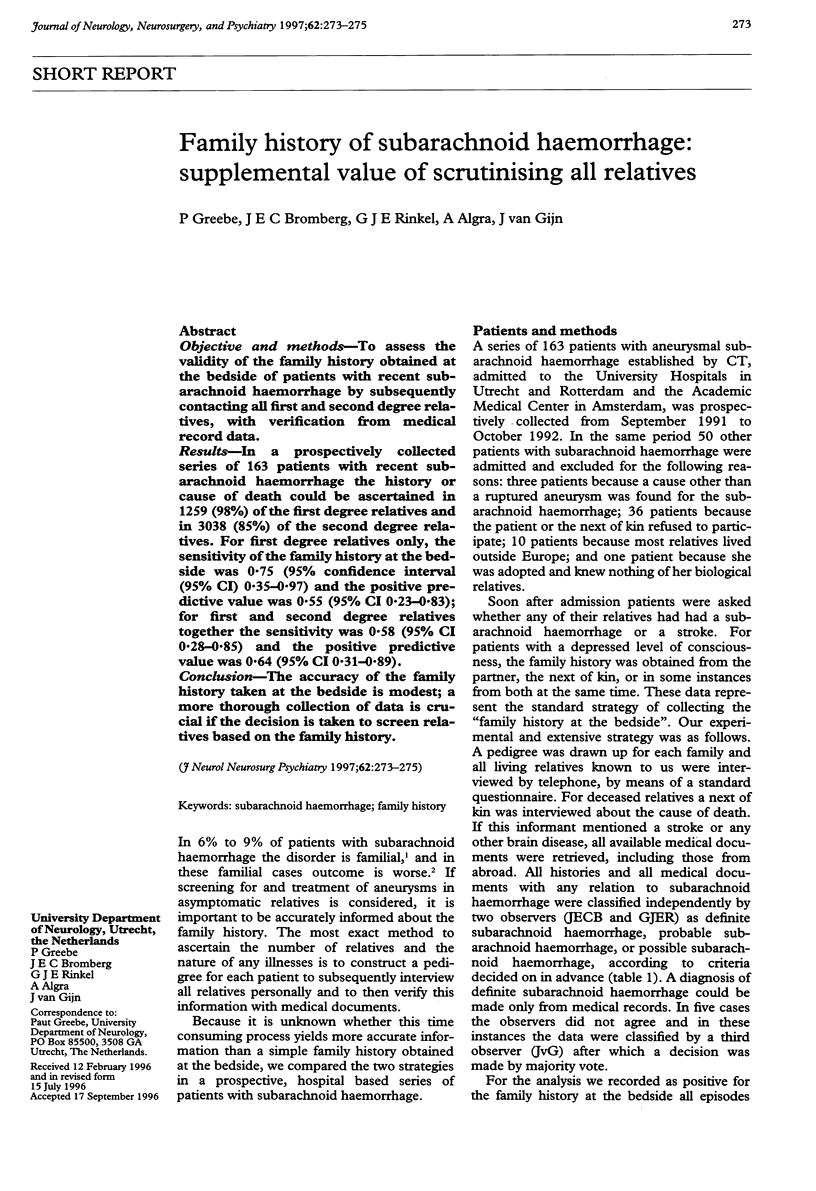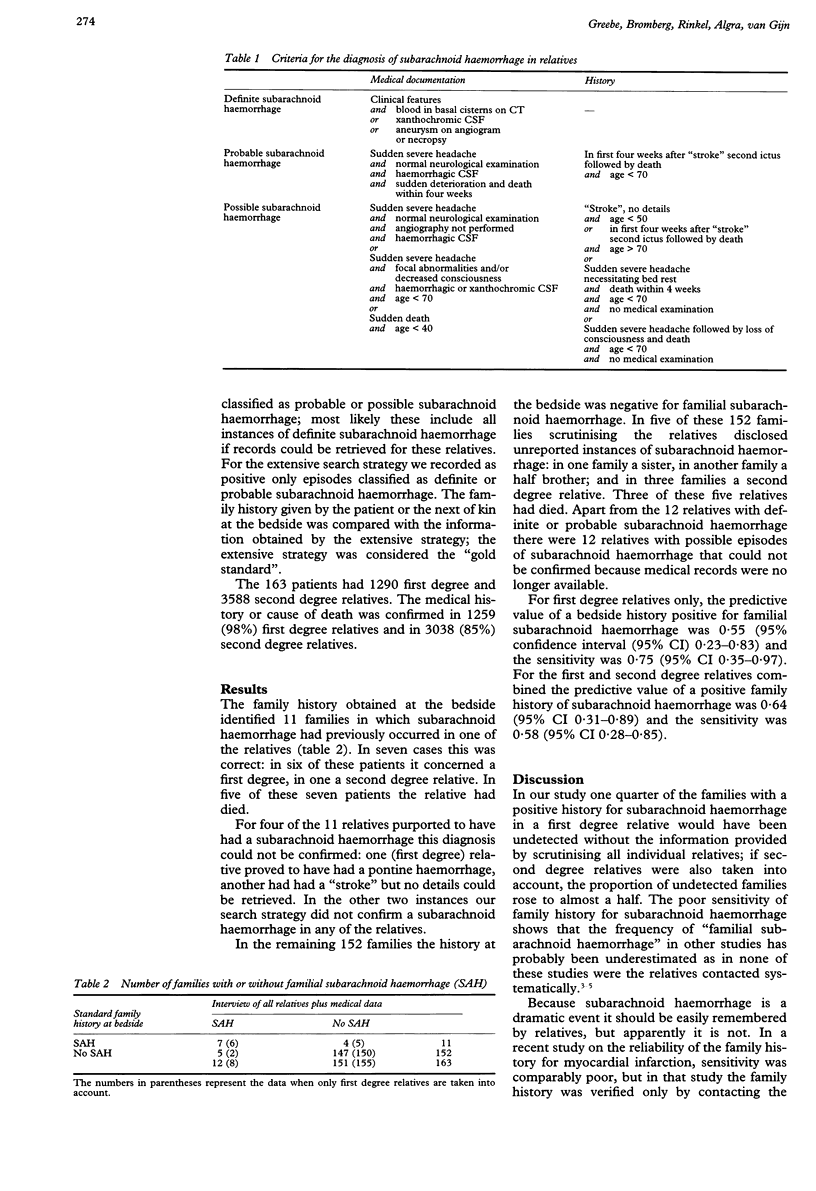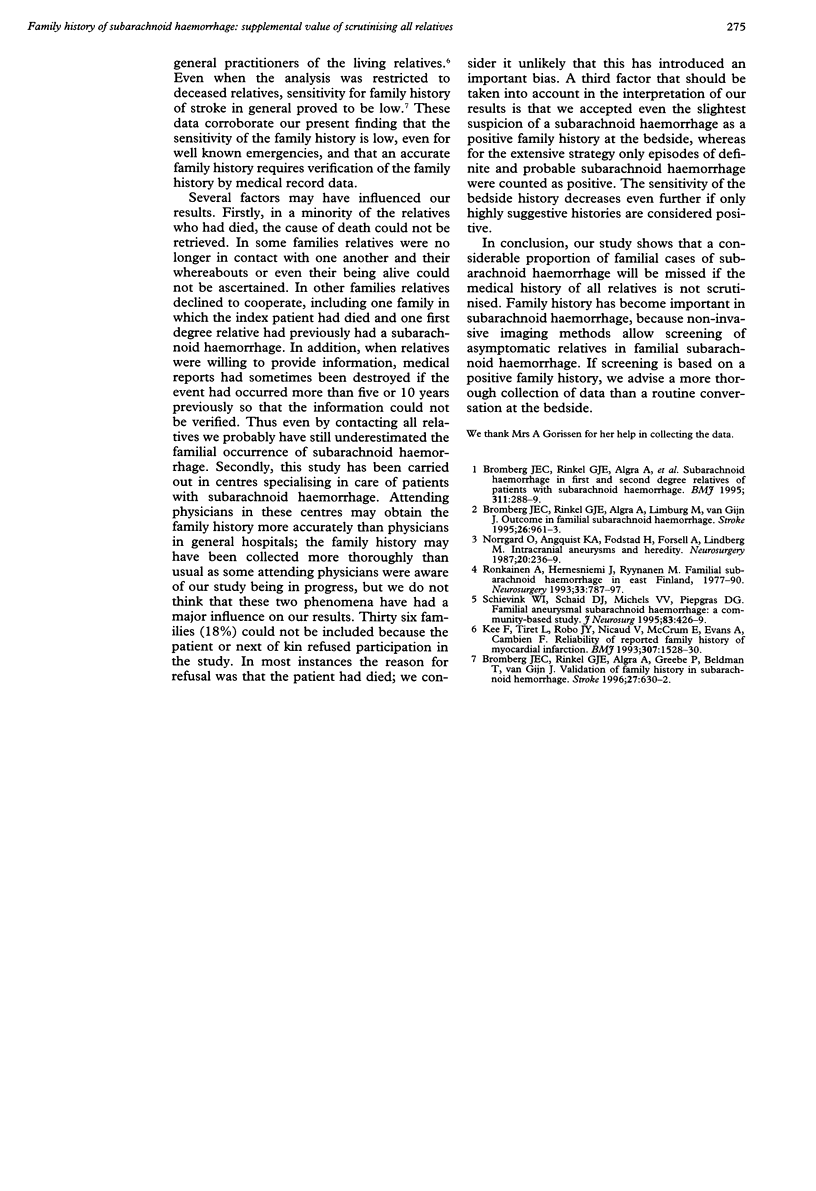Abstract
OBJECTIVE AND METHODS: To assess the validity of the family history obtained at the bedside of patients with recent subarachnoid haemorrhage by subsequently contacting all first and second degree relatives, with verification from medical record data. RESULTS: In a prospectively collected series of 163 patients with recent subarachnoid haemorrhage the history or cause of death could be ascertained in 1259 (98%) of the first degree relatives and in 3038 (85%) of the second degree relatives. For first degree relatives only, the sensitivity of the family history at the bedside was 0.75 (95% confidence interval (95% CI) 0.35-0.97) and the positive predictive value was 0.55 (95% CI 0.23-0.83); for first and second degree relatives together the sensitivity was 0.58 (95% CI 0.28-0.85) and the positive predictive value was 0.64 (95% CI 0.31-0.89). CONCLUSION: The accuracy of the family history taken at the bedside is modest; a more thorough collection of data is crucial if the decision is taken to screen relatives based on the family history.
Full text
PDF


Selected References
These references are in PubMed. This may not be the complete list of references from this article.
- Bromberg J. E., Rinkel G. J., Algra A., Greebe P., Beldman T., van Gijn J. Validation of family history in subarachnoid hemorrhage. Stroke. 1996 Apr;27(4):630–632. doi: 10.1161/01.str.27.4.630. [DOI] [PubMed] [Google Scholar]
- Bromberg J. E., Rinkel G. J., Algra A., Greebe P., van Duyn C. M., Hasan D., Limburg M., ter Berg H. W., Wijdicks E. F., van Gijn J. Subarachnoid haemorrhage in first and second degree relatives of patients with subarachnoid haemorrhage. BMJ. 1995 Jul 29;311(7000):288–289. doi: 10.1136/bmj.311.7000.288. [DOI] [PMC free article] [PubMed] [Google Scholar]
- Bromberg J. E., Rinkel G. J., Algra A., Limburg M., van Gijn J. Outcome in familial subarachnoid hemorrhage. Stroke. 1995 Jun;26(6):961–963. doi: 10.1161/01.str.26.6.961. [DOI] [PubMed] [Google Scholar]
- Kee F., Tiret L., Robo J. Y., Nicaud V., McCrum E., Evans A., Cambien F. Reliability of reported family history of myocardial infarction. BMJ. 1993 Dec 11;307(6918):1528–1530. doi: 10.1136/bmj.307.6918.1528. [DOI] [PMC free article] [PubMed] [Google Scholar]
- Norrgård O., Angquist K. A., Fodstad H., Forsell A., Lindberg M. Intracranial aneurysms and heredity. Neurosurgery. 1987 Feb;20(2):236–239. doi: 10.1227/00006123-198702000-00006. [DOI] [PubMed] [Google Scholar]
- Ronkainen A., Hernesniemi J., Ryynänen M. Familial subarachnoid hemorrhage in east Finland, 1977-1990. Neurosurgery. 1993 Nov;33(5):787–797. doi: 10.1227/00006123-199311000-00001. [DOI] [PubMed] [Google Scholar]
- Schievink W. I., Schaid D. J., Michels V. V., Piepgras D. G. Familial aneurysmal subarachnoid hemorrhage: a community-based study. J Neurosurg. 1995 Sep;83(3):426–429. doi: 10.3171/jns.1995.83.3.0426. [DOI] [PubMed] [Google Scholar]


